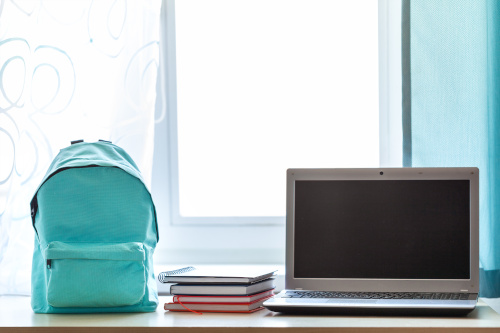Heading back to school can be an exciting yet challenging time for students, teachers, and parents alike. While many school systems are returning to full in-person learning, some students are taking advantage of virtual or hybrid learning models their school may offer.
Hybrid learning serves as a great option for students–however, in the early days of pandemic virtual learning, teachers noticed the need for stronger tools and resources in order for them to create the best possible learning experience.
With the hybrid learning model here to stay, many teachers are continuing to struggle with keeping their students engaged, while some learners find it difficult to stay motivated and pay attention to instruction.
Another major challenge within the hybrid learning model is the development of social-emotional skills. As learning turned completely virtual with the onset of the pandemic, developing social-emotional skills became a major challenge. A recent study found that over half of parents surveyed felt the pandemic had a negative impact on their child’s social-emotional development. The study also found that 53% of early childhood educators noticed behavioral changes throughout the pandemic, and of those who spotted changes, 77% felt they included negative behaviors, such as temper tantrums or sadness.
As we head back to school this fall, whether it’s fully in-person, hybrid, or completely virtual, here are some of my tips for a successful start to the school year:
1. Strive for at least one personal connection each day. As an educator, it’s important to challenge yourself every day to make sure you’re in tune with how your students are feeling so you can help facilitate a positive classroom environment. Whether in-person or online, an easy way to start a personal connection is by asking a question to each student. It can be a writing prompt or just a casual question throughout the day to form a connection and better relate to each student. Some examples of questions include: What do you want me to know about you today? What was your favorite part of the day? What was your biggest challenge? What did you eat for breakfast this morning? As you can see, these questions can be as simple or as complex as you’d like them to be, but it’s something that can be done in a hybrid setting to ensure your students feel connected both online and in-person. It also challenges them to reflect on their day and their feelings, so they can learn how to understand their emotions and better their communication skills.
2. Encourage group work. Working in groups or with partners is a huge part of one’s social-emotional learning journey as it allows students to collaborate and teaches them how to work well with others. It also allows for active learning and keeps your students engaged, while also allowing them to socialize. When I was a kid, one of my favorite things to do in the classroom was work with partners or in groups. When the pandemic hit, I always felt so bad for my students who had to miss out on the opportunity for in-person group learning. Thankfully, Class’ software has an enhanced breakout rooms feature, which allows for structured small group collaboration for peer-to-peer or instructor-peer learning within the online learning environment. This gives students the chance to socialize and conquer group work, even if their classes are online.
3. Foster a culture of honesty and transparency. Everyone has rough days. Be open with your students when you are struggling and allow students to do the same. Whether learning from home or learning in a classroom, students can sense your energy, whether it’s positive or negative. If you are tired in the morning because your puppy kept you up all night, let students know that you’re having a difficult day. If you received bad news that affects your day, feel free to share this transparently in an appropriate way, so that students know that your classroom is a safe space to share your feelings with each other. Everyone has bad days, and modeling honesty up front will help your students do the same. Communication is key. Humanize yourself–you are a role model for them, which doesn’t which that doesn’t mean you need to be perfect, it just means you need to be human.
4. Model a supportive atmosphere. Compliment students whenever you see them stepping outside of their comfort zone, helping others, or failing forward. Sharing a few positive words of reinforcement can be huge, and if you’re teaching online, sending a quick, nice message is an easy way to show your students that you support them and acknowledge their work. I’ve encouraged my students to do the same when a classmate is helpful to them or if they see them working hard. Students succeed when they are recognized by both teachers and peers and starting this habit early will continue to foster a positive learning environment.
5. Celebrate and practice mistakes. Mistakes happen. Students are people too, and it’s important to make sure they know everyone makes mistakes sometimes. While in-person or online, practice making mistakes with the reminder that, in life, making mistakes is an opportunity to grow both inside and outside of the classroom. Practice the right way and the wrong way to do something. In the past, I’ve purposely called out the mistakes I make to remind my students that mistakes happen to everyone and it’s alright to laugh at ourselves.
Overall, a new school year can be intimidating for teachers and students alike, but deliberately creating a hybrid learning environment that is equipped with the proper tools can make it easier for both instructors and students to thrive and form a positive classroom experience.
- 3 ways to avoid summer learning loss - April 19, 2024
- High school students say AI will change the workforce - April 18, 2024
- Motivating students using the Self-Determination Theory - April 17, 2024


